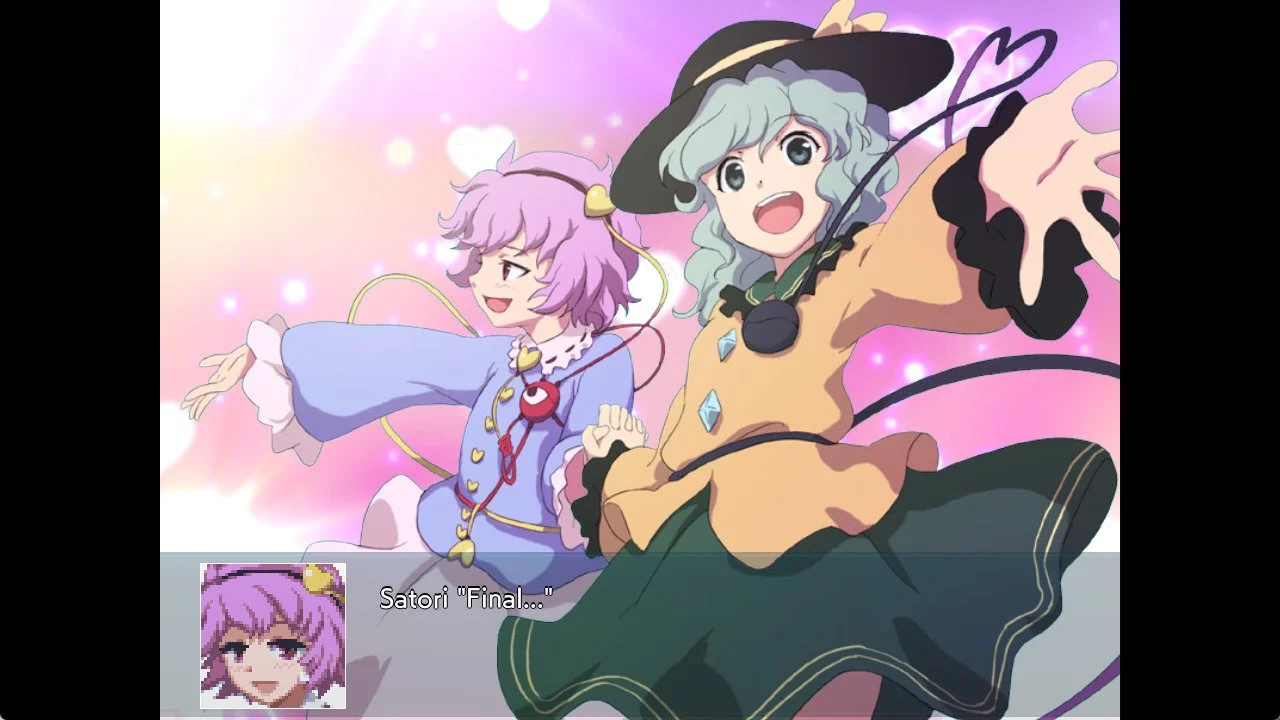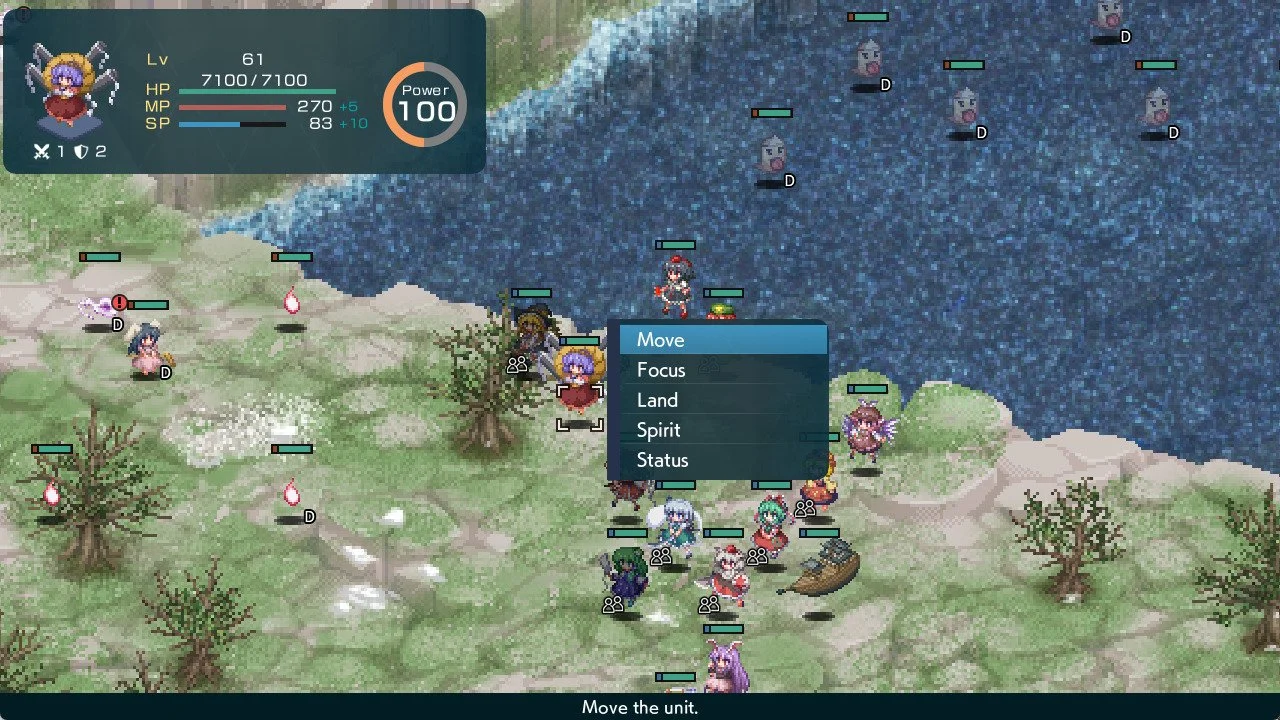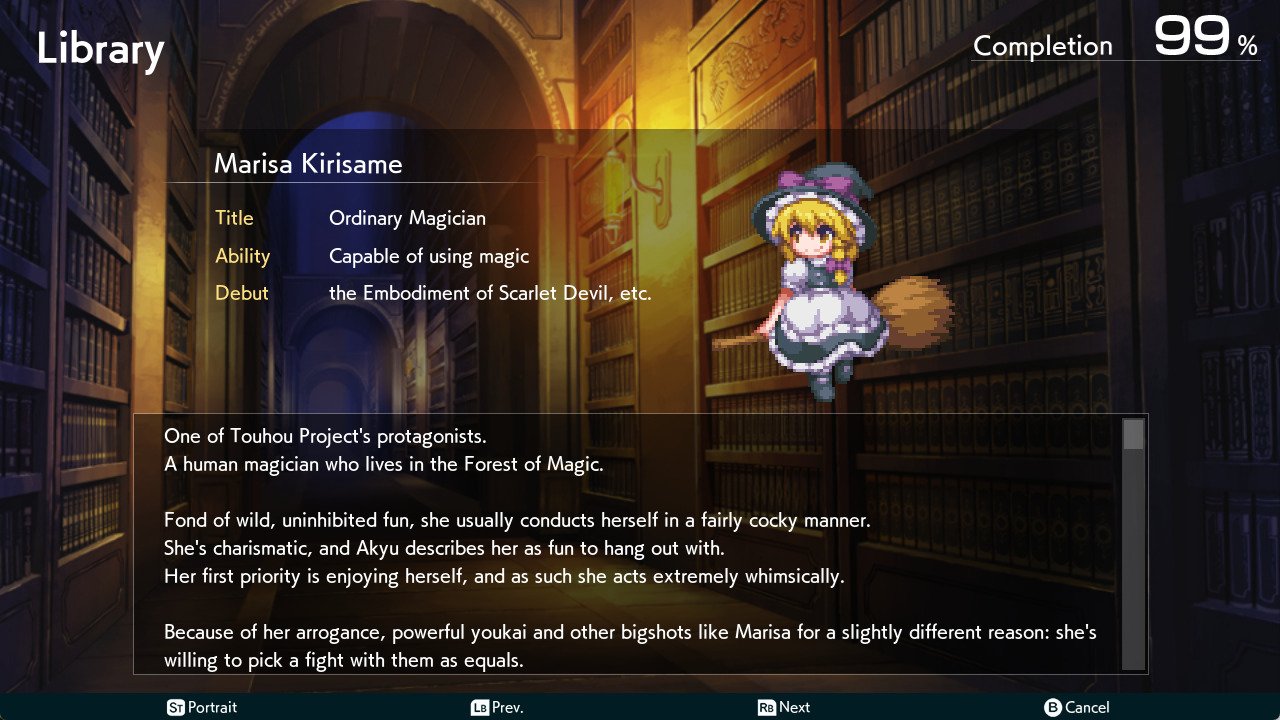Review | Fantasy Maiden Wars - For Touhou Fans and First-Timers
Fantasy Maiden Wars began life as four strategy games released for PC by the independent studio Sanbondo between 2010 and 2017. These games were then combined into one big package, Fantasy Maiden Wars Complete Box, which was ported to Switch as Fantasy Maiden Wars: DREAM OF THE STRAY DREAMER. It is this massive package that was ported back to PC and translated into English this year by a dedicated crew.
Fantasy Maiden Wars combines characters and concepts from two cult classic video games. The first is Touhou Project, a long-running series of “bullet hell” shoot-em-ups that follow Reimu the shrine maiden as she keeps the peace in the mysterious land of Gensokyo. Along the way she befriends fairies, magicians, gods, and various youkai, all of which are as likely to throw a drinking party at her shrine as they are to blast each other with death lasers.
The second is Super Robot Wars, a strategy RPG series starring characters and robots from various mecha anime. Mobile Suit Gundam and Neon Genesis Evangelion are there, but so are lesser-known series like Raideen the Brave, Galaxy Cyclone Braiger, and The King of Braves GaoGaiGar. Every one of them receives lovingly detailed animations for their special attacks. But it’s also fun just to see their pilots interact with each other in absurd fanfiction scenarios, like Evangelion’s Shinji Ikari being mentored by hot-blooded robot pilots.
Fantasy Maiden Wars adapts Touhou’s cast to a system influenced by Super Robot Wars. The characters play just like you’d expect. Garrulous magician Marisa obliterates her opponents with flashy but expensive attacks. Ice fairy Cirno looks small and fragile, but her “Persist” spirit cuts enemy attacks to a mere 10 damage, proving that she really is the strongest. Priestess Sanae builds Faith in her god to split the oceans with magic. While you can tweak each character’s roles by switching skills or teaching them new abilities, you’re best served by leaning into their strengths in battle.
The developers Sanbondo also incorporate bullet hell mechanics into the game itself. In the original Touhou games, holding the Shift key switches your character into Focus mode, concentrating damage and decreasing speed to avoid enemy bullet patterns or “danmaku”. Fantasy Maiden Wars similarly includes enemies that generate “danmaku” debuff fields. To counter this, you can shift your units into Focus mode. But this also decreases their range of movement and subjects them to “graze” damage even if they dodge an enemy’s attack. Of course, there are ways to reduce graze, or even benefit from it.
Bosses have their own special danmaku fields, called “spellcards”, with powerful effects. These spellcards often expire after a set number of turns. While the player has the option to wait them out, they are encouraged to clear them within the turn limit by inflicting as much damage as quickly as possible for a big EXP payload. Of course, the strongest bosses have multiple spellcards to clear, each with their own weird gimmicks.
As a result, Fantasy Maiden Wars has much more dynamic boss fights than I’m used to seeing in strategy RPGs. Flandre Scarlet’s spellcard “And Then There Were None” damages every tile on the board except for a tiny safe zone, transforming the game into turn-based bullet hell. Yuyuko’s “Resurrection Butterfly” inverts all healing. Then there’s the fight against mountain gods Kanako and Suwako, where whichever opponent you take down first determines the final phase. These are all in just the first half of the game, too; the second half ups the ante into truly bonkers territory.
Modern Super Robot Wars games, starting with V in 2017, are pretty easy. Your units are strong enough that you can overcome nearly every battle without worrying about customisation. While I wouldn’t say that Fantasy Maiden Wars is a hard game per se, at least on the Normal+ difficulty, its heart is with the earlier, tougher Super Robot Wars titles rather than the newer ones. Bosses can and will wipe a third of your army if you treat their spellcards lightly. Even regular stages can have tricky bonus conditions that require you play efficiently to earn points. So if you’ve been frustrated by how Super Robot Wars 30, for instance, was a total pushover, I think you’ll find Fantasy Maiden Wars to be a nice change of pace. (Then again, this version of the game is reportedly easier than earlier releases.)
Of course, Fantasy Maiden Wars isn’t just about battles. It’s a celebration of everything Touhou, whether that be the characters, the bullet patterns, or the music. This is most obvious with each character’s special attack animations, which are packed with funny references not just to Touhou but to other super robot anime. Take Minoriko Aki. By herself she’s a middle-of-the-road tank. But then her special attack, Sweet Potato Room, traps her opponent between the halves of a giant sweet potato. Even better, when she teams up with her sister Shizuha, they perform Super Aki Sisters Kick, which is just Super Inazuma Kick from the science fiction OVA classic Gunbuster. Every character in the game has an extravagant attack like that. Some of those attacks even have their own theme songs.
Also relevant is how the game plays with canon. Fantasy Maiden Wars is a reconstruction of the Touhou Project timeline, starting with Embodiment of the Scarlet Devil. Reimu and Marisa begin the game knowing very little about the world of Gensokyo. Every character and concept is explained to the player as they appear. Outside of a few references to the PC-98 games, I never once felt as if I was expected to know anything about Touhou Project as a whole. If anything, Fantasy Maiden Wars taught me to appreciate characters that I’d previously only recognised for their aesthetics rather than for their personalities.
That’s not to say the game lacks surprises if you’re a Touhou fanatic. While the first few dozen chapters are slavishly faithful to the source material, later chapters introduce unexpected twists. Who is the mysterious voice speaking to Marisa in her dreams? What’s the deal with Yuuka, a character from the PC-98 games observing the cast from afar? Every time that Fantasy Maiden Wars breaks from lovingly referencing past Touhou games to venture into new aesthetic territory, it always hits hard.
Straddling these two extremes of Touhou fandom is the game’s Library, which contains everything that you’ve ever wanted to know about the series. The Gensokyo Chronicle profiles every character in the game including not just staples like Reimu but enemies (Kedama, Sunflower Fairy) and even NPCs (Human A through C). The Glossary on the other hand breaks down series concepts like the Great Hakurei Barrier and what it means to Pass into Fantasy. Not to mention inscrutable developer in-jokes like “Headbutt”: “Setting aside whether or not this even deserves to be a spellcard,” reads the Glossary, “it was made with passion.”
What I find most interesting about the Library is how it rejects simple canonicity. Even as the Gensokyo Chronicle describes who or what a character is, its entries also mention contradictions in how they behaved in past games. Considering that Gensokyo is a realm of myths and legends, I’m reminded by how myths in our own world don’t always cohere. Fantasy Maiden Wars positions itself as just one interpretation of Touhou rather than the definitive rendition, because there can never be a definitive rendition.
Finishing Fantasy Maiden Wars took me about 70 hours. But that was with just one character, Reimu. Not only does Marisa have some exclusive chapters of her own, but beating the game once (plus a few bonus scenarios) lets you switch to “Dream Mode” and import any six characters from your winning file back to the start of the game. At this point, the game changes gears from a strategy RPG into a Touhou sandbox. Want to take Satori and Koishi through the whole game as your MVPs? Sure! Have your unit Flan fight the enemy boss Flan, leading to a conversation where they acknowledge how absurd it is that they are fighting themselves? That’s fine. Not to mention the bonus ending. You don’t need to reach it; the game’s regular ending is perfectly satisfying. But if you beat Fantasy Maiden Wars and want to keep playing, you can. Probably forever.
So this is a game with plenty to offer both Touhou novices and diehards. My one criticism would be that the Steam version of Fantasy Maiden Wars I played for release was riddled with display errors. The interface mixes keyboard and button prompts; the game crashes every time I switch to Fullscreen mode. I ended up using the freeware program Magpie for window scaling, which worked well but shouldn’t be required for a good experience. My guess is that this has something to do with the Steam version being ported from Phoenixx Inc.’s Switch release. Hopefully these issues are patched, but in my experience, that is never a guarantee with English translations of doujin games.
Backend problems aside, Fantasy Maiden Wars is a grand introduction to the world of Touhou that’s also a fun strategy game in its own right. If you’ve ever wanted to know just why people are so devoted to a series of independent games that has run for nearly thirty years, long before the “indie movement” as we now know it in the United States existed, this is where you should start.









